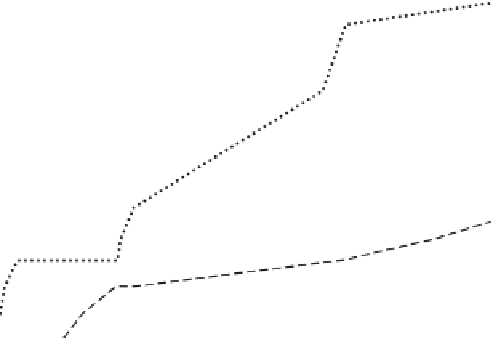Biology Reference
In-Depth Information
0.7
Factory demographics only
Demographics and linkages
Random predictor
0.6
0.5
0.4
0.3
0.2
0.1
0
0
0.05 0.1
Fraction of the Most Suspicious Factories Inspected
0.15
0.2
Figure 9.8
Recall characteristics obtained with AFDL using only factory profiles to estimate probability of
future occurrence of
Salmonella
Montevideo
(dashed line with circle markers) and when linkage
features are added (dotted line with triangle markers) indicate benefits from aggregating
evidence across entities with similar past behaviors.
(e.g., a particular serotype of
Salmonella
) in samples taken at different facto-
ries can be treated as phenomenological evidence of their potential relation-
ship and put in as links of a uni-partite graph spanning all factories under
consideration. Given profiles of factories, their historical patterns of linkage
with other factories, and the information about the distribution of the cur-
rently observed microbial positives (which make the corresponding estab-
lishments “active” in the AFDL terminology), it is possible to predict which
of the remaining establishments are likely to also report positive results of
tests.
The AFDL's ability to predict which of the factories would record at least
one positive for a specific strain,
Salmonella Montevideo
, has been tested over
six months following two years worth of training data. Figure 9.8 presents
lift charts that summarize the results. Using only demographic features of a
factory to make predictions does not help much as the result is barely distinct
from what can be obtained by randomly sampling the entities. But adding
phenomenological linkage information improves percentages of correctly
recalled “active” factories, in which in fact
Salmonella Montevideo
was found
during the six-month test period. Using linkages derived from training data
of co-occurrences of matching
Salmonella
serotypes substantially boosts the
observed performance. It can be explained by the benefits of aggregating evi-
dence across multiple factories sharing similar histories of microbial safety
performance.






















